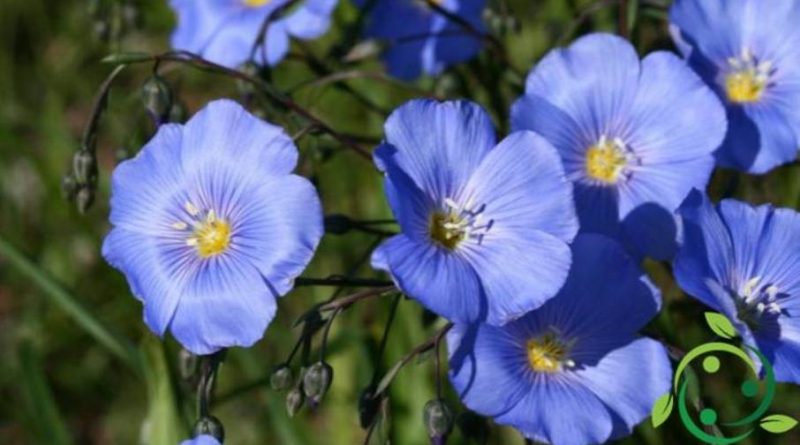How to grow flax
How to grow flax
The common flax (Linum usitatissimum L., 1753) is one of the first domesticated crops with artifacts dating back to 30,000 BC. In this sheet we will see how to grow flax and optimal conditions for the growth and production of this plant. today, the linen plant, outside of intensive production, is also used for ornamental purposes, because of its beautiful flowers. In addition to production for textile purposes, which are obviously of a more intensive nature, flax can also be grown for the production of oil obtained from seeds but also for the use of these as food supplements. Its seeds are in fact high in fiber and omega 3. They are widely used in vegan nutrition as thickeners.
The Linum usitatissimum L. includes many forms and types grown, divided into two large groups: the fiber flax which includes the high-cut forms, elastic stem, long and ductile fibers, small inflorescence, small blue or sometimes white flowers, seeds small and brown; these forms prefer coastal environments, fresh, without strong temperature variations; the oil flax which includes small-sized forms, with a stiff bearing, with short and sturdy stems, branched at the base, with short and coarse fibers, very developed inflorescences, blue and sometimes purple flowers, with larger seeds, brown or tending to reddish; they prefer warm and sunny environments. The cultivation of flax is quite simple provided that the plant’s physiology and its cultivation needs are well known. The sowing of linen must be done in the spring, for spring types and in October, for the autumn types, directly in the field; in intensive cultivation this is done with suitable seed drills, in the conditions of smaller or more familiar extensions it is done by spacing the seeds to about ten centimeters and buried these to a depth of about 1 cm. The emergence of the first seedlings, which take advantage of the soil moisture, after the winter and spring rains, takes place after a few days. The growth of the plant averages around 80 cm in height. The flowering of the flax is already at the beginning of the summer when it is possible to admire an abundant flowering which, at the end of the season, will turn into pods from which it will be possible to collect the seeds. For the collection of the seeds the flax plant should be removed and hung in a ventilated area, leaving it to dry. In the intensive cultivation, for the production of fiber the harvesting takes place using mechanical grubbers, while for the production of oil it is carried out with normal combine harvesters. When the plant will show dry, if you proceed with manual harvesting, you can crush the pods and take the seeds inside. Remember that if irrigation can not be necessary in the north, in the south it is necessary to intervene with 2-3 rescue irrigations. In intensive cultivation, linen occupies the first place in the rotation, so it must be fertilized accordingly; in family-type crops it is advisable to make organic substances (excellent mature manure) before soil preparation. Flax seeds have interesting food properties; as very rich in vitamins of the B, C and A group, flax is therefore an important plant not only in the textile field but also in herbal medicine and in the kitchen; from this plant are also made many products for body care and especially hair. The flax contains omega 3 and is rich in mucilages, which help intestinal functions. It is used in the daily diet to lower cholesterol and for protection from cardiovascular diseases. For food use, flax oil should always be used raw and never cooked, because at high temperatures it becomes rancid. It is an oil that rancidifies and easily wicks so it should be kept in the fridge once opened. For this reason it is sold in small and dark bottles to be protected also by U.V rays.

